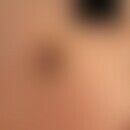DefinitionThis section has been translated automatically.
Harmonised legislation of the European Community published in the Official Journal of the European Union on 22 December 2009 the European Cosmetics Regulation 1223/2009. The legislation is directly applicable in all Member States of the European Union since 11 July 2013 and replaces Directive 76/768/EEC on cosmetic products.
The EC Cosmetics Regulation 1223/2009 simplifies procedures and strengthens certain elements such as market surveillance in order to ensure the highest possible level of protection of human health. The EC Cosmetics Regulation 1223/2009 also defines, among other things, the term cosmetics.
According to it, cosmetics are "substances or mixtures intended to come into contact with the external parts of the human body (skin, hair system, nails, lips and external intimate regions) or with the teeth and the mucous membranes of the oral cavity for the sole or predominant purpose of cleaning them, perfuming them, changing their appearance, protecting them, keeping them in good condition or controlling body odour" (Art. 2(1)(a) of the Regulation).
Annexes I - VI contain information on the safety of cosmetic products. Substances are listed which are prohibited or may only be contained under restrictions. Furthermore, the authorised colourings, preservatives and UV filters are listed. Annex VII lists the symbols to be used on the packaging/containers and Annex VIII evaluates validated alternative methods to animal testing.
ClassificationThis section has been translated automatically.
Annexes to the Cosmetics Regulation:
- Annex I: Safety report for cosmetic products
- Annex II: List of prohibited substances
- Annex III: List of substances which may be contained under restrictions
- Annex IV: List of authorised colourants
- Annex V: List of authorised preservatives
- Annex VI: List of approved UV filters
- Annex VII: Symbols to be used on packages/containers
- Annex VIII: List of validated alternative methods to animal testing (no entry so far)
General informationThis section has been translated automatically.
Cosmetic product safety and restrictions: The general principle of the responsibility of manufacturers or importers for the safety of the cosmetic product is complemented by some important restrictions for certain substances (colouring agents, preservatives, UV filters). These restrictions are listed in Annexes II to VI.
Advertising claims: The Regulation is supplemented by Regulation (EC) 655/2013 laying down common criteria for the justification of claims relating to cosmetic products. These claims must be supported, explicitly or implicitly, "by sufficient and verifiable evidence, whatever the nature of the evidence used to support the claims (including, where appropriate, expert opinions)". "Presentations concerning the effect of a product must not go beyond what is supported by the available evidence".
Notification requirements: New in the Regulation compared to Directive 76/768/EEC on cosmetic products is the obligation for manufacturers to notify cosmetic products via the EU Cosmetic Products Notification Portal (CPNP). Frame recipes and product labels (Label) have to be deposited.
Adverse reaction reporting: Article 23 of the EC Cosmetics Regulation sets out the procedure for reporting serious adverse reactions (excerpts are given here).
In the event of serious adverse reactions, the responsible persons shall report the following information to the competent authority of the Member State in which the serious adverse reaction occurred:
- any serious undesirable effects of which they are aware or of which they may reasonably be expected to be aware (47/243L ED Official Journal of the European Union L 342/75)
- the name of the cosmetic product in question, enabling its precise identification;
- the corrective measures which they may take.
Where the responsible person notifies the competent authority of the Member State in which the effect occurred of serious undesirable effects, the competent authority shall immediately transmit this information to the competent authorities of the other Member States. Where end users or health-care professionals report serious undesirable effects to the competent authority of the Member State in which the effect occurred, that competent authority shall immediately transmit the information on the cosmetic product concerned to the competent authorities of the other Member States and to the responsible person.
Animal testing: Annex VIII of the Regulation limits animal testing in accordance with European Council Directive 86/609/EEC of 24 November 1986 on the approximation of laws, regulations and administrative provisions of the Member States regarding the protection of animals used for experimental and other scientific purposes. Thus, Article 7 of this Directive stipulates that no animal experiments may be carried out if scientifically satisfactory alternatives are available.



